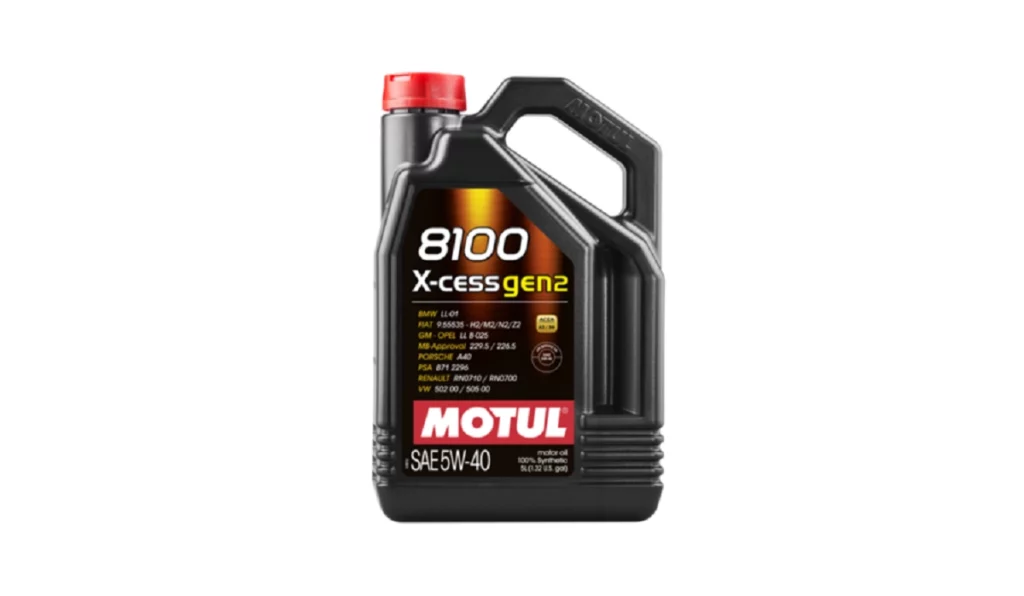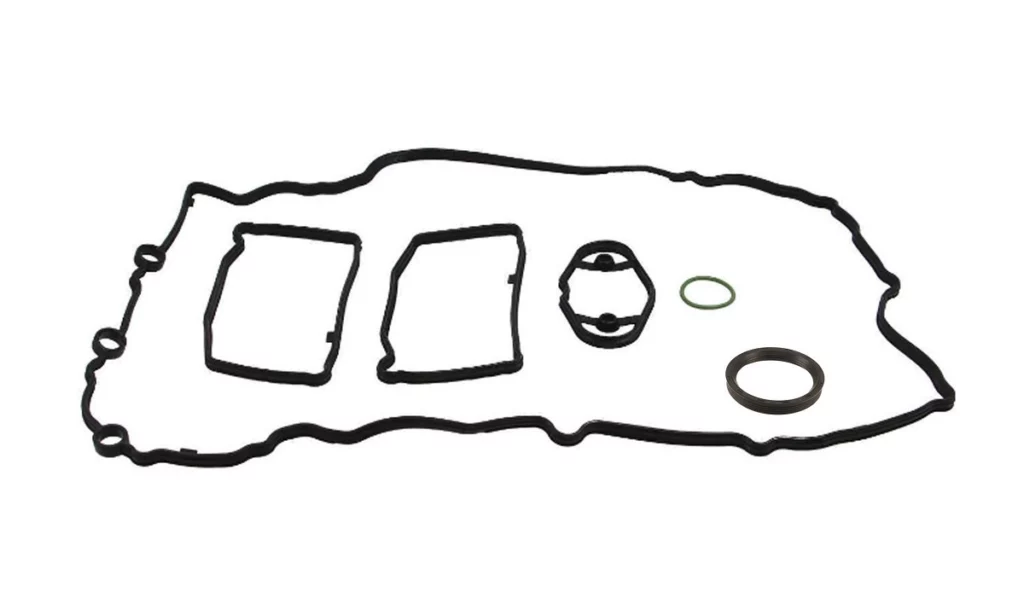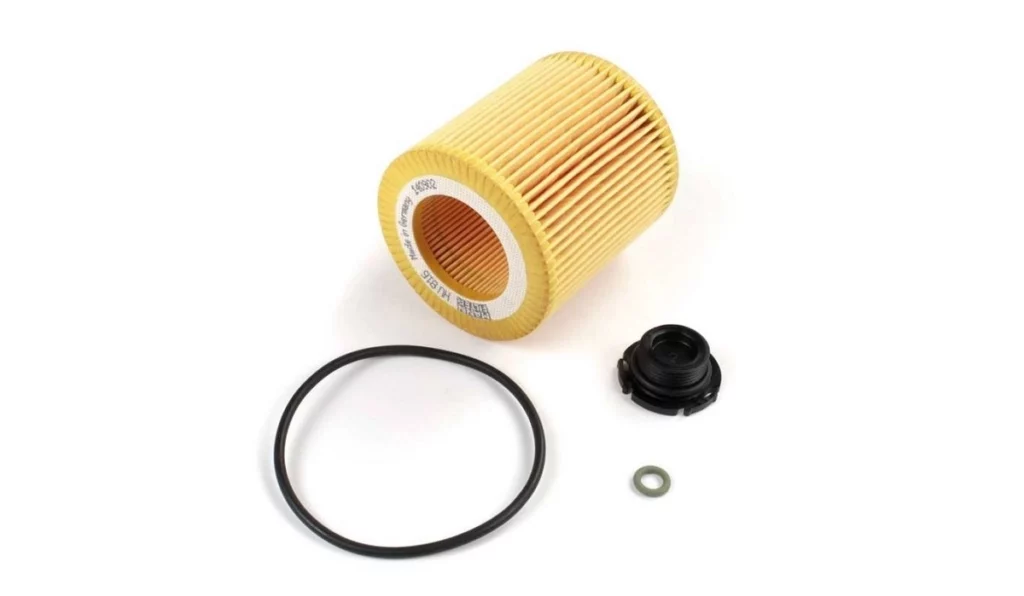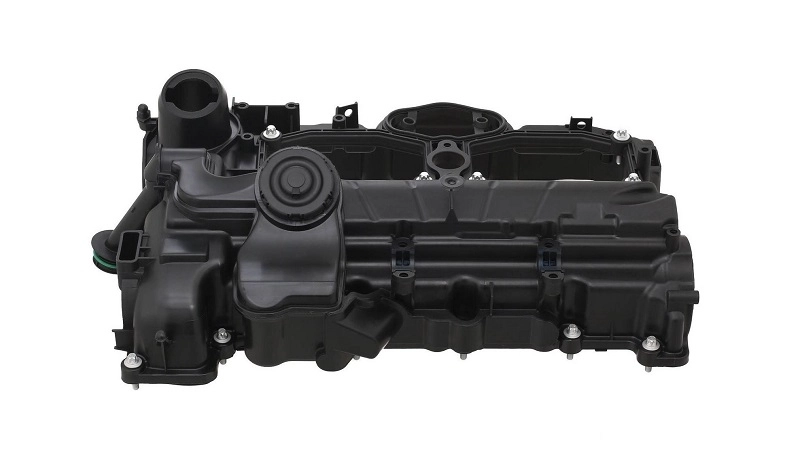Welcome to our detailed guide on one of the most common issues BMW N20 engine owners face: the dreaded valve cover leak. As enthusiasts and owners know, the N20 engine is the pinnacle of BMW’s engineering skill, known for its performance and efficiency. However, as with any sophisticated mechanical system, it is susceptible to various faults, including the valve cover leak.
This comprehensive guide will explore the complexities of the BMW N20 valve cover leak issue, highlighting its causes and symptoms and, most importantly, how to address it efficiently. Additionally, we will provide you with maintenance advice to avoid N20 valve cover leak issues.
Whether you are a seasoned DIYer or a classic BMW driver who knows every vein of their machine, addressing this issue is critical for the health and lifespan of your cherished BMW N20-powered vehicle. So, let’s get started and learn everything you need to know about this common pest and how to get rid of it for good.

Understanding the BMW N20 Valve Cover Leak
The valve cover is a critical engine component. It is a protective housing for various internal components, such as the camshaft, valves, and valve springs. It also plays a crucial role in sealing the top of the engine to prevent oil leaks and debris from entering.
Valve cover leaks can occur in the BMW N20 engine due to several factors. Over time, the gasket that seals the valve cover to the engine block may degrade, leading to oil seepage. Additionally, the valve cover can develop cracks or other damage, compromising its ability to maintain a tight seal.
Symptoms of BMW N20 Valve Cover Leak
Now that we have understood the context of the N20 valve cover leak, the next is to identify the common signs when your BMW is induced with such an issue. It is vital for a quick intervention to prevent potential damage and maintain engine performance. Here are the key symptoms to watch out for.
Oil Puddles Under the Car
One of the most obvious signs of an N20 valve cover leak is the presence of oil puddles underneath the vehicle, especially after it has been parked for some time. Inspect the ground where you typically park your car for any signs of oil accumulation.
Burning Oil Smell
A distinct burning oil smell, particularly noticeable after driving or when the engine is warm, can indicate an oil leak. The smell may enter the cabin through the air vents, signaling a significant leak or oil dripping onto hot engine components.

Visible Oil Leakage
A visible oil leakage could mean the N20 valve cover gasket is worn out. This causes oil to seep and drip around the edges. It’s a sign that the gasket needs fixing to stop the leak. If left, it could harm the engine. Fixing it fast helps keep the engine running smoothly and avoids bigger problems.
Reduced Oil Level
Monitor the engine oil level regularly using the dipstick or onboard vehicle diagnostics. A severe oil leak can lead to a consistent drop in oil level without any visible signs of external leakage and could indicate an internal leak through the valve cover gasket.
Check Engine Light
Another sign of the N20 valve cover leak is the illumination of the check engine light. This can appear in two scenarios: if the leak is left unaddressed, thus damaging the engine, and when the leak is severe and affects the air-fuel mixture. In both instances, attention is necessary to prevent further engine damage.
Engine Misfires or Rough Idle
Engine misfires and rough idling can be attributed to an N20 valve cover leak causing a vacuum leak in the Positive Crankcase Ventilation (PCV). This leak disrupts the proper air-fuel mixture, leading to irregular combustion in the engine cylinders, resulting in misfires and rough idling. Addressing the valve cover leak is crucial to restoring the correct air-fuel balance and resolving these issues.
Causes of BMW N20 Valve Cover Leaks
After acknowledging the common signs of N20 valve cover leaks, it becomes necessary to acknowledge the most common causes. It is crucial for effectively addressing and preventing this common issue. Below are several factors that can contribute to the development of N20 valve cover leaks.
Gasket Degradation
Over time, the gasket sealing the valve cover to the engine block and other areas may degrade due to exposure to heat, engine oil, and environmental factors. This degradation can lead to oil leaks around the perimeter of the valve cover. The valve cover has multiple seals, including those for the VANOS actuator, Valvetronic actuator, high-pressure fuel pump, vacuum pump, oil filler cap, and the cylinder head itself. All these seals/gaskets require immediate attention if they show signs of leaks to maintain engine health and efficiency.
Valve Cover Damage
The valve cover can also be damaged, especially in high-mileage vehicles or those subjected to harsh driving conditions. Cracks, warping, or other damage can compromise its integrity and lead to oil leaks. Additionally, improper installation of the valve cover or overtightening of the fasteners can cause damage that contributes to leaks over time.
Overheating
When a BMW N20 engine overheats constantly, it puts extra strain on parts like the valve cover and its gasket. This strain can make the gasket wear out faster, leading to leaks. Constant exposure to overheating can also damage the valve cover itself, making it harder to keep oil sealed in. In such a scenario, urgent repair on your cooling system prevents engine damage and maintains performance.

Poor Maintenance Practices
Neglecting routine maintenance tasks such as oil changes and inspections can contribute to the development of valve cover leaks over time. Regular maintenance helps ensure that components remain in optimal condition and allows for the early detection and correction of potential issues before they escalate into more significant problems.
Get Genuine BMW parts at Discount Rates
Bimmers.com is not your average online automotive parts vendor. We’re catalysts for change in how you source premium BMW and OEM components, setting a fresh standard in the industry. Our mission is straightforward: to arm every car enthusiast with unparalleled access to top-tier parts, all at prices that won’t drain your wallet.
Fueled by an unshakeable vision, we are on a quest to redefine the essence of vital car maintenance, making it accessible and affordable to all enthusiasts and drivers alike. Every item in our inventory is carefully selected to match your vehicle’s exact specs, guaranteeing that each component satisfies the stringent criteria of original equipment manufacturers.
At Bimmers.com, we’re not just another option; we’re more like your trusted partner. We’re all about striking that perfect balance between affordability and top-notch quality. Our mission? To hook you up with major savings while ensuring your car’s essential parts stay rock-solid. So, if you’re ready to score big without compromising your ride’s integrity, welcome aboard!
Renowned as the ultimate destination for BMW aficionados who demand nothing short of excellence, we take immense pride in being the go-to option for discerning buyers who prioritize reliability and unmatched value in every automotive transaction.
Diagnostic Steps for BMW N20 Valve Cover Leaks
So far, we have learned about the BMW N20 valve cover leaks, their symptoms, and their causes. Now is the time to address them through a step-by-step diagnostic process. Diagnosing a BMW N20 valve cover leak requires a systematic approach and careful observation of specific indicators. Here are the essential diagnostic steps to follow.
Visual Inspection
Start by visually inspecting the engine bay, focusing on the area surrounding the valve cover. Look for any signs of oil leaks, including wet spots, oil residue, or pooling oil. Pay close attention to the perimeter of the valve cover, where leaks are most likely to occur. Additionally, look closely at the VANOS actuator, Valvetronic actuator, high-pressure fuel pump, vacuum pump, oil filler cap, and the cylinder head itself.
Check Oil Levels
Verify the engine oil level. A significant decrease in oil level may indicate a substantial leak, while a slight decrease could suggest a minor leak that requires attention. Remember that low oil levels can lead to engine damage if not addressed quickly.
UV Dye Test
Add UV dye to the engine oil following the manufacturer’s instructions. Run the engine briefly to circulate the dye throughout the oil system. Use a UV light to illuminate the engine bay and inspect for traces of fluorescent dye, highlighting the leak’s source. If your budget is too tight not to afford a UV dye test, then follow this method:
After a major oil leak, start by cleaning up the mess. Then, take your car out for a spin for a day or two. When you’re back, check for leaks once more. This method often reveals where the oil is coming from.

Inspect the Valve Cover and Gasket
Remove engine covers and components to access the valve cover. Check for damage like cracks or warping. With the engine on, look for oil leaks around the cover, paying attention to the gasket and bolt holes. This inspection ensures the timely repair of any issues.
DIY Solutions for the BMW N20 Valve Cover Leak Issue
We have gone through everything from causes to diagnostic steps to understand and address the BMW N20 valve cover leaks. The only remaining step is the actual course of action: repairing the N20 valve cover leak through DIY solutions. Here are the solutions to the N20 valve cover leaks.
Identify the Source of the Leak
Before proceeding with any repairs, accurately identifying the leak’s source is crucial. This involves visually inspecting the engine bay and pinpointing where the oil leak originates. Common areas to check include the valve cover, oil filler cap, gaskets, seals, and other components contributing to the leak.
Valve Cover Removal
If the inspection reveals that the leak is due to the valve cover gasket or signs of damage to the valve cover itself, proceed with removing the valve cover. However, if the leak is identified as an oil filter cap leak, then no need to remove the valve cover. Just install a new oil filler cap, and that’s it!
Before starting to work on removing the valve cover, follow these safety measures
- Allow the engine to cool
- Work in a well-ventilated area
- Use personal protective equipment (gloves, safety glasses)
- Disconnect the battery

Tools required to remove the valve cover on the BMW N20 engine
- 8mm Socket
- 10mm Socket
- 12mm Socket
- 14mm Socket
- 17mm Socket
- E6 Socket
- E8 Socket
- E10 Socket
- E18 Socket
- T30 Torx Bit Socket
- Stubby Torx Set
- Ratchets
- Ratchet Extensions
- Torque Wrench
- Flathead Screwdriver
Now follow these steps to remove the valve cover
- Begin by removing the engine cover to expose the valve cover.
- Disconnect the wirings from the cylinder head.
- Proceed to remove the high-pressure fuel pump and fuel rail.
- Remove both the vacuum pump and VANOS actuators.
- Replace the valve cover gasket.
- Reinstall the VANOS actuators and vacuum pump.
- Refit the high-pressure fuel pump and fuel rail back into place.
- Reconnect the wirings to the cylinder head.
- Finally, refit the engine cover securely.
BMW N20 & N26 Valve Cover Gasket Torque Specs
- High-Pressure Fuel Pump Bolts — 9 ft-lbs or 12 Nm
- Fuel Injector Line Fittings — 9.5 ft-lbs or 13 Nm
- Strut Brace Bolts — 41 ft-lbs or 56 Nm
- Valve Cover Bolts — 7 ft-lbs or 9 Nm
- Camshaft Adjuster Fasteners — 4 ft-lbs or 5.5 Nm
Valve Cover Inspection
The valve cover must be examined under a microscope to see any signs of cracks or warping. This step is particularly beneficial if you initially suspect only a gasket issue with your car. By fully examining the valve cover during this stage, you can be sure to address any underlying issues and achieve a successful repair.
Gasket and Seals Replacement
With the valve cover removed, the next step is to replace the gasket and any other seals contributing to the leak. This involves carefully removing all the old and stiff gaskets and seals, thoroughly cleaning the mating surfaces of the valve cover and cylinder head, installing the new gasket and seals, and re-torquing the bolts to the manufacturer’s specifications.
Maintenance Tips to Prevent Valve Cover Leak Recurrence
We are not done yet. Proactive maintenance is key to ensuring the long-term health and performance of your BMW N20 engine. Here are some maintenance tips to help prevent valve cover leaks from recurring:
Regular Inspection
Schedule periodic inspections of the valve cover and surrounding components for signs of oil leakage or damage. Look for oil accumulation along the edges of the valve cover, down the engine block, and on adjacent components. Look closely at the VANOS actuator, Valvetronic actuator, high-pressure fuel pump, vacuum pump, and oil filler cap for signs of oil leak.
Use Quality Engine Oil
Use high-quality genuine engine oil that meets BMW specifications for viscosity and performance. Regularly change the engine oil and filter at recommended intervals to maintain proper lubrication and minimize stress on the valve cover gasket.

Proper Torque Specifications
When replacing the valve cover gasket or bolts, ensure proper torque specifications are followed during installation. Avoid over-tightening or under-tightening the bolts, as it can lead to improper sealing and potential leaks.
Address PCV System Issues
Regularly inspect the PCV system for blockages or malfunctions. Clean or replace PCV valves, hoses, and components as needed to prevent excessive crankcase pressure, which can contribute to valve cover leaks.
Monitor Engine Performance
Pay attention to changes in engine performance, such as misfires, rough idle, or decreased fuel efficiency, which may indicate underlying issues, including valve cover leaks. Address any performance issues early to prevent further damage to the engine.
Fix BMW N20 Valve Cover Leaks Using Quality BMW Gaskets
Looking to address valve cover issues in your BMW N20 engine? Look no further than Bimmers.com, where we specialize in providing top-quality solutions for common BMW maintenance needs.
At Bimmers.com, we understand the importance of reliable performance and peace of mind regarding your vehicle. That’s why we offer a wide selection of genuine OEM BMW valve cover gaskets specifically designed for the N20 engine. Our gaskets meet BMW’s rigorous standards, ensuring a perfect fit and dependable performance.
In addition to valve covers and gaskets, we provide supportive components such as engine oil, coolant, and hardware kits to help you confidently complete your maintenance tasks. Don’t let the N20 valve cover issues disrupt your driving experience. Visit Bimmers.com today to find the quality BMW gaskets and components you need for reliable performance on the road.

















